Manchester United certainly can't be accused of standing still this year. A day after sealing the signing of Jadon Sancho, they confirmed a new contract for Ole Gunnar Solskjaer until at least 2024.
But there's still plenty to press on with for Solskjaer and United. While the signing of Sancho addresses one area that has been a problem in recent years, it appears there are still two glaring weaknesses in the first-choice starting XI.
It would seem United have identified the man to take care of one of them, with Real Madrid centre-back Raphael Varane reportedly set to bolster their defensive options. In one sense it will have been a signing long in the making, given the club were supposedly close to buying him from Lens as a teenager only for Los Blancos to get the deal over the line in the end.
Although it took Varane a little time to truly establish himself at the Santiago Bernabeu, he's gone on to enjoy a hugely successful time in the Spanish capital, winning three LaLiga titles and four Champions League crowns, among a host of other trophies.
Below, Stats Perform delves into the Opta data to see how Varane might improve United and where else they could do with reinforcements.
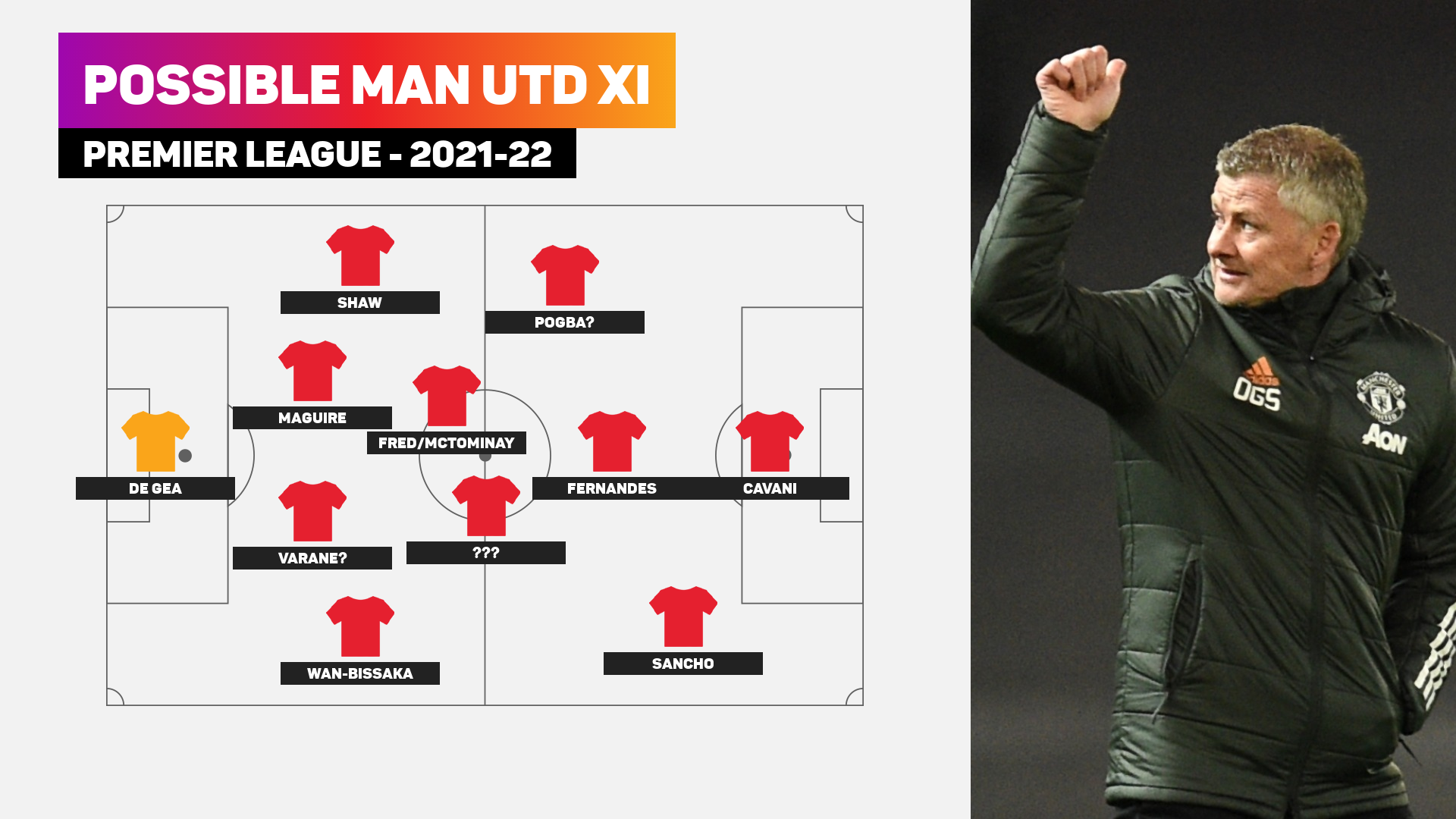
Physical dominance is the key
There are some obvious strengths that Varane would bring to United at the back – chief among them is his pace, which they arguably don't have a great deal of at centre-back.
While Victor Lindelof and Harry Maguire may not be considered painfully slow, neither boasts the same kind of speed as the Frenchman and that would undoubtedly be a considerable asset for United.
Recent reports have suggested Solskjaer wants to play more attack-minded football in 2021-22, and having a faster centre-back could be crucial in that sense.
In theory, it would allow United to play slightly higher up the pitch. While they didn't exactly defend deep in 2020-21, their average starting position of 42.3 metres from their own goal was deeper than six other teams – Varane's pace could potentially provide them with a little more security in a high line.
In terms of possession, there's not a great deal separating Varane and Lindelof, the man whose position is surely in doubt. The Sweden international averaged fractionally more successful passes (58.1 to 55.9) and accurate passes in the opposing half (17.81 to 17.77) per 90 minutes last season, but that could be a reflection of slightly differing styles of play implemented by the teams rather than ability.
Opta sequence data suggests they are similar as well. While Lindelof (14) may have been involved in four more goal-ending passing sequences, the expected goals (xG) value attached to Varane in those instances is actually higher (8.9 to 8.8), meaning the current United man's influence is likely being exaggerated by particularly good finishing from his team-mates.
Even their ball carrying tendencies aren't hugely different, though Lindelof does boast a greater average carry distance of 11.3m to 10.9m, while his average progress up the pitch of 5.7m is a minor improvement on the 5.4m posted by the Madrid man.
But it could be argued United don't need their right-sided centre-back to be forward-thinking all the time because that's one of Maguire's key strengths. If anything, having a dependable partner could allow for their captain to have even greater prominence going forward, as he may feel more relaxed about stepping up with better protection behind.
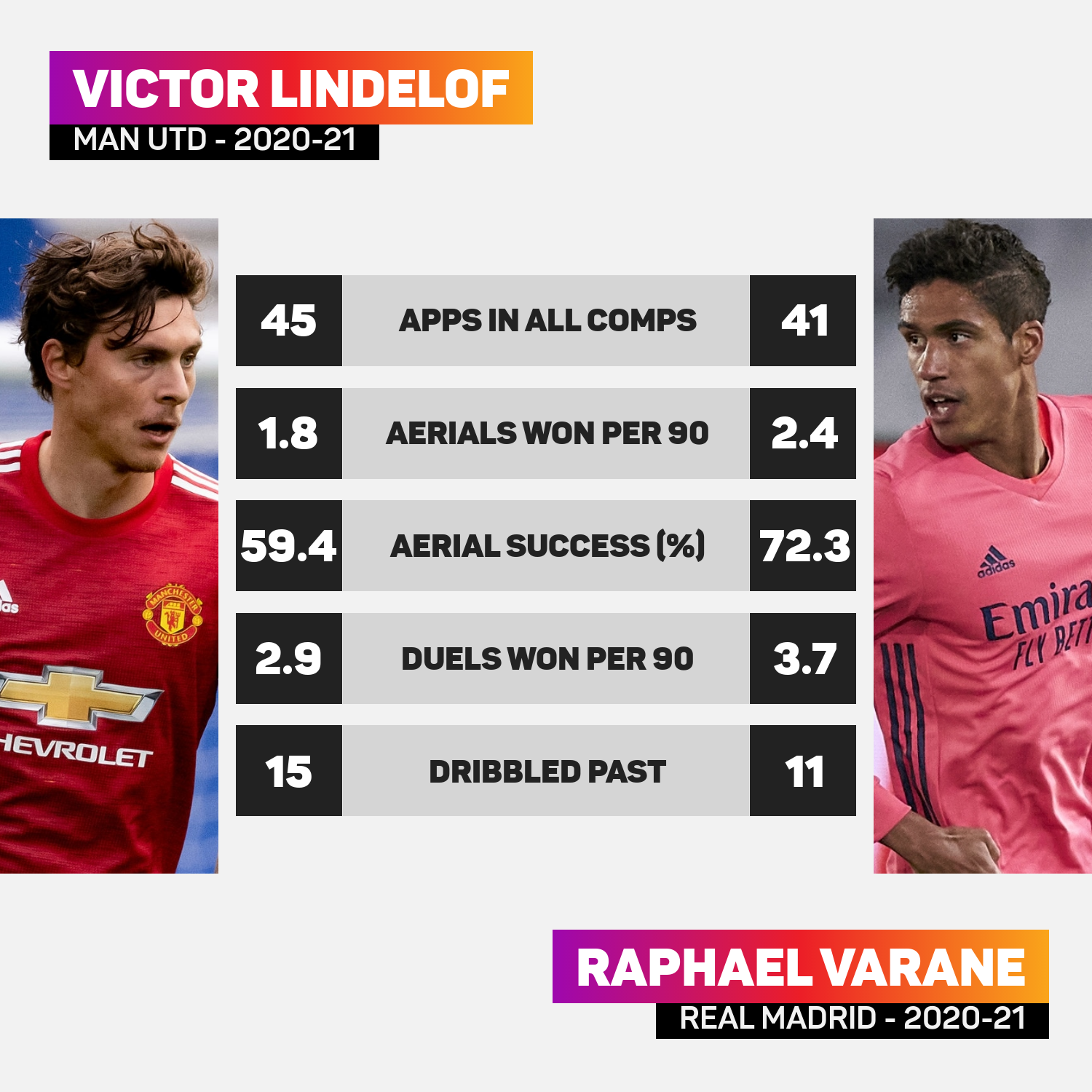
And that's where Varane could really shine as an upgrade on Lindelof. The Swede's effectiveness in physical duels has been routinely questioned since he joined from Benfica in 2017 – a prime example being when Mbaye Diagne bullied him as West Brom scored in their 1-1 draw with United in February.
While it's impossible to guarantee Varane wouldn't have also been dominated in that instance, he does have a better record in situations where physicality is important. In 2020-21, he won 2.4 aerial duels per game across all competitions compared to Lindelof's 1.8.
That equates to a 72.3 per cent success rate for Varane, as opposed to 59.4 for Lindelof. In fact, Maguire – the most dominant defender in that respect in the Premier League last season (100 duels or more) – only marginally edges the World Cup winner (72.9 per cent).
But when we broaden the comparison to encompass all duels, Varane comes out on top among all three of them (66.5 per cent). Maguire wins 63.8 per cent of those contests, whereas that drops to 53.1 per cent for Lindelof.
United fans have been crying out for a more physically dominant defender to partner Maguire, and in Varane they may have identified a centre-back to rival him in those stakes.
Is the Fred-McTominay axis necessary?
Centre-back certainly isn't the only area United fans would be eager to see an upgrade – there's little doubt they have room for growth in midfield, regardless of whether or not Paul Pogba leaves.
The Frenchman actually featured more from the left during the second half of 2020-21 and looked more comfortable out there with some creative freedom, rather than sitting behind Bruno Fernandes in the middle.
That meant Fred and Scott McTominay were, more often than not, the first-choice pairing at the base of the midfield.
Now, it must be said that both players have clearly improved significantly over the past couple of years and they do offer a lot to United in certain areas.
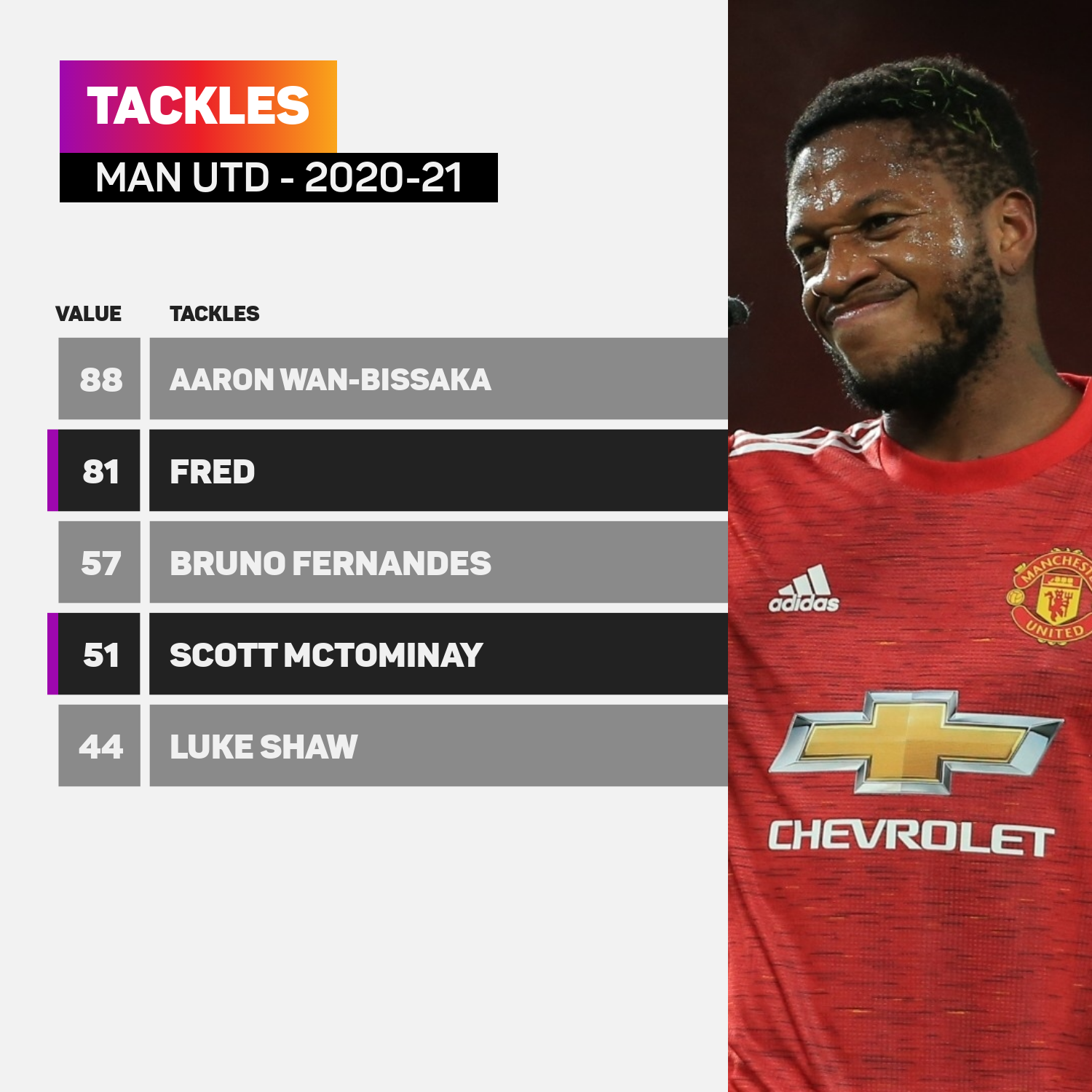
For instance, in the Premier League in 2020-21, Fred won possession more often than any other United player (228) and his 81 tackle attempts were only bettered by Aaron Wan-Bissaka (88). McTominay ranked fourth for tackles (51) and joint-second for fouls won (42), which speaks to his improved ability on the ball as well as a knack for relieving defensive pressure in transition.
But neither are particularly creative. Fred laid on 25 key passes with an expected assists (xA) value of 2.1, while McTominay created 17 chances that combined to an xA total of 0.7.
Of course, you can't expect every outfield player to offer creativity. In many cases a player's productivity – or lack of – is intrinsically linked to the role they're playing or system they're part of, and Fernandes has done a lot of the heavy lifting. But United are a side who generally have more of the ball than their opponents – do they need two 'destroyers'?
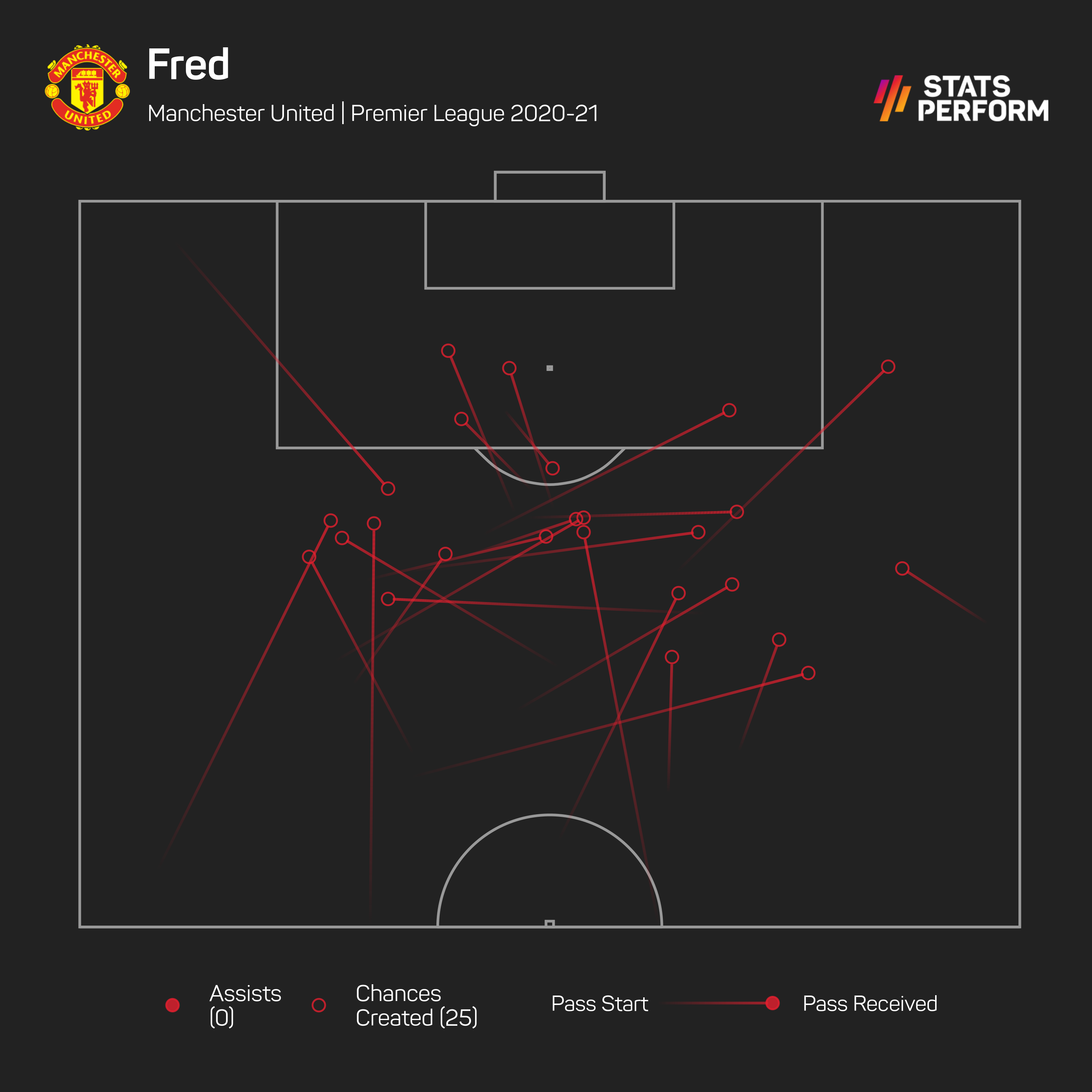
If Solskjaer is to implement a more forward-thinking setup in 2021-22, he would be wise to finally ditch the Fred-McTominay axis. More often than not, it comes across as extremely conservative.
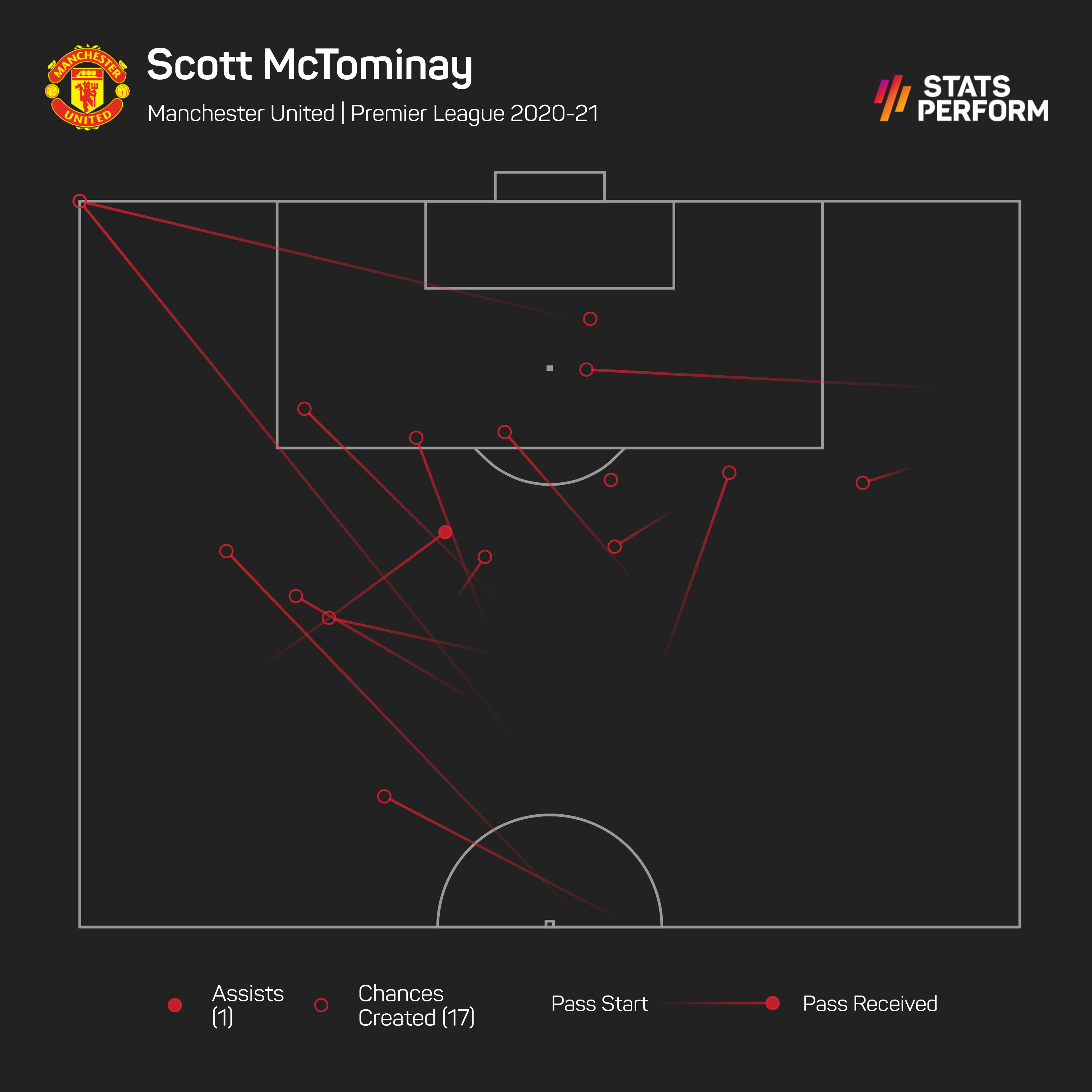
But the caveat to that is Solskjaer's rather limited options. Donny van de Beek endured a pretty dreadful first season as he showed very little authority whenever he played, Pogba was more useful towards the left so his lack of work rate off the ball wasn't exposed, and Nemanja Matic just isn't athletic enough anymore even if he is still a talented ball-player.
Pressure now on Ole
Who's to say if another midfielder, Varane and Sancho will be enough to overthrow Manchester City while also holding off a Liverpool side who promise to be back with a vengeance and defending European champions Chelsea.
But such decisive addressing of the team's weak points should at least give Solskjaer the right tools to work with. It'll then be on him to prove conclusively he's the right man for the job, because further under-achieving with such a strong squad won't be tolerated for long, regardless of his new contract.
Jose Mourinho was sacked less than a year after signing his renewal in January 2018.




















